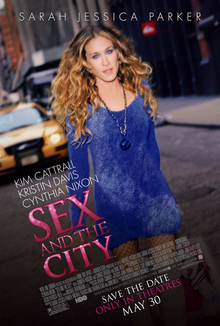 As mentioned in a previous post, I'm watching movies at home now. And I've watched a few of Netflix movies last week that I haven't yet written about, because I don't have much to say about them. So I'll collect them all together into one post.
As mentioned in a previous post, I'm watching movies at home now. And I've watched a few of Netflix movies last week that I haven't yet written about, because I don't have much to say about them. So I'll collect them all together into one post.The first movie I tried to watch was The Golden Compass (Weitz, 2007). Like the Archbishop of Canterbury Rowan Williams and unlike most evangelical Christians, I appreciated the story's criticism of dogmatism. But I did find the critique coming dangerously close to being itself a kind of dogmatic secularism that worships the authority of "science" as much as it criticizes religions for adherence to authority. More importantly, I found the movie boring and confusing. Without having read the book, I found it difficult to follow all the plot that had been shoe-horned into two hours. I imagine this is what people who haven't read the Harry Potter books feel like when they watched the movies. My final verdict: I didn't end up finishing the movie.
I had much more fun with Scanners (Cronenberg, 1981). I'm a big fan of David Cronenberg's early sci-fi/horror movies, though I have enjoyed his more recent "mainstream" movies like A History of Violence less. (Actually my favorite Cronenberg movie -- Dead Ringers -- sort of bridges this gap between horror and drama.) But I don't have anything interesting to say about the movie. I simply liked it. It's just good (admitedly somewhat cheesy) fun.
Then, in preparation for Scott Derrickson's upcoming remake, I watched the original The Day the Earth Stood Still (Wise, 1951). Scott has taken some flak from internet geeks for remaking a classic. But let's face it, Day isn't Psycho. (Someday I'll write up my thoughts on Gus Van Sant's remake of the Hitchcock classic.) I enjoyed its retro special effects, but its social commentary seemed pretty heavy-handed. I didn't find more here than in a lesser episode of The Twilight Zone. Hopefully Scott can do something more with this premise.
 Finally, after those three sci-fi films, I watched two religious documentaries: How to Cook Your Life (Dörrie, 2007) and Into Great Silence (Gröning, 2005). (Are you getting an idea of my cinematic taste yet?) The latter film was not nearly as interesting as I thought it would be. Into Great Silence follows the daily life of Carthusian monks who have taken a vow of silence. Watching the film was a nice meditative experience. I particularly loved the sound design. Since there is not talking, each scene involves some cool background sounds. At one point we even hear the snow falling! But I didn't really learn anything new from the film. Life in the monestary was pretty much just as I expected it to be.
Finally, after those three sci-fi films, I watched two religious documentaries: How to Cook Your Life (Dörrie, 2007) and Into Great Silence (Gröning, 2005). (Are you getting an idea of my cinematic taste yet?) The latter film was not nearly as interesting as I thought it would be. Into Great Silence follows the daily life of Carthusian monks who have taken a vow of silence. Watching the film was a nice meditative experience. I particularly loved the sound design. Since there is not talking, each scene involves some cool background sounds. At one point we even hear the snow falling! But I didn't really learn anything new from the film. Life in the monestary was pretty much just as I expected it to be.How to Cook Your Life, on the other hand, was much better than I thought. The film is a portrait of Zen teacher Edward Epse Brown. When I saw the trailer for the movie, I thought Brown was annoying and not a very good Buddhist. He gets frustrated while cooking. How does that demonstrate non-attachment? But Brown actually ended up being pretty wise. As an amateur chef I appreciated the way he drew life lessons from the act of cooking. He perfectly captured the feeling of Zen bliss that I feel in the kitchen. I really enjoyed sitting at his feet for a couple of hours.

















